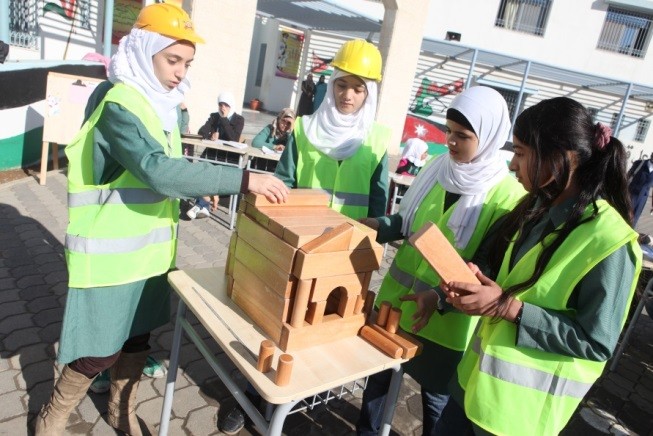Background

Currently, poor learning environments, in part caused by inadequate physical infrastructure, compromise the quality of education in Jordan. Many students learn in overcrowded classrooms and schools, particularly in urban areas. Due to the influx of Syrian refugees, the situation has worsened. Moreover, many schools are in need of repair, updated facilities, and new equipment. Deterioration of infrastructure is intensified by overuse and misuse.
USAID/Jordan's education strategy is designed to help the performance of Jordan's education system by improving early grade literacy and numeracy, providing professional development for educators, presenting opportunities for out-of-school and at‐risk youth, improving psychosocial school environments to reduce drop‐out rates, and expanding community involvement. However, meeting all these objectives requires an environment with adequate and well-maintained physical structures that is supplied with effective teaching materials and equipment.
In August 2006, USAID launched the Jordan School Construction and Rehabilitation Project (JSP). The project’s primary mandate was to reduce overcrowding in public schools, replace rented and double-shifted schools and provide a safe and more suitable school environment that responds to the needs of the MOE’s reform efforts.
JSP established new school design concepts and guidelines to improve the school environment. JSP focused on developing designs that would respond effectively to school needs, while at the same time having a forward-looking vision in terms of future and upcoming education trends, especially in the use of technology and project based learning. Since 2009, 28 new schools have been constructed and equipped and 117 school rehabilitations and expansions completed.
Activities

USAID has developed three approaches to address these challenges. First, the Schools of Knowledge Economy Project (SKEP) will construct 25 new schools in overcrowded areas and will offer modern learning environments that facilitate the use of technology, student-centered learning, community and parental engagement and access for people with disabilities.
Second, the Jordan School Expansion Project (JSEP) will expand and improve existing schools to accommodate increased enrollment and enhance school functions. This will be achieved through the renovation and expansion of 120 MOE schools, construction of 300 public kindergarten classrooms and construction and/or renovation of 50 sports fields and facilities.
Third, the Learning Environment Improved Infrastructure Project (LEIIP) will renovate existing schools and improve the educational environment. The project will improve the functionality of 132 MOE schools across Jordan.
Achievements

- Completed the construction and furnishing of 28 new schools with enhanced quality and learning features, as well as rehabilitated and expanded 117 existing public schools.
- Improved the learning environment for more than 100,000 students attending 125 new or rehabilitated schools, and 12,180 kindergarten students in 609 renovated kindergarten classrooms.
- Renovated playgrounds and/or provided sports kits at 100 schools, and provided life skills activities serving more than 20,000 students.







Comment
Make a general inquiry or suggest an improvement.